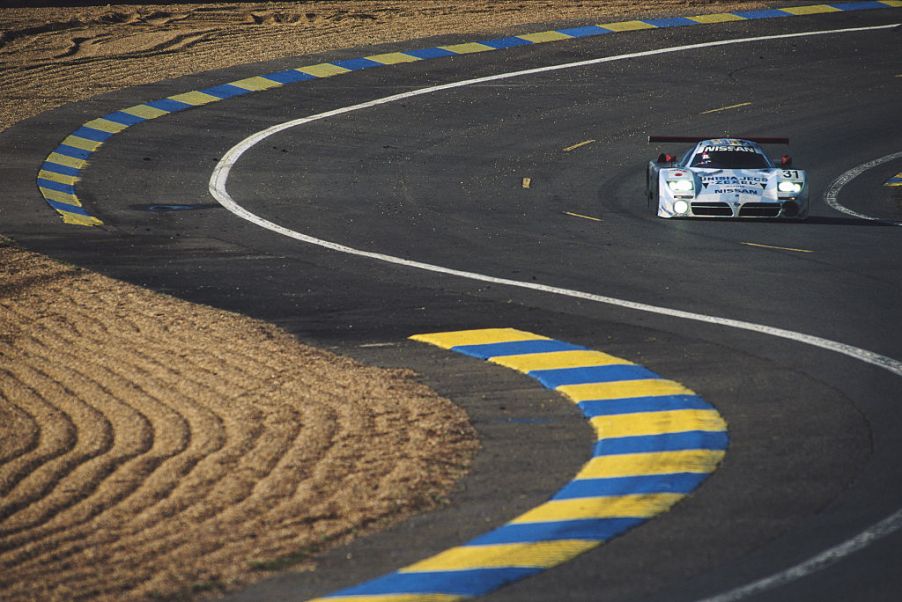
A Nissan Racecar for the 24 Hours of Le Mans
The 24 Hours of Le Mans is a race unlike any other, featuring some of what are considered the best sports cars in the world. It is known to host cars from many different manufacturers, such as Ferrari, Porsche, Alfa Romeo, Bentley, and many others. What you may find surprising is that Nissan also designed a car to compete in the 24 Hours of Le Mans: The Nissan R390 GT1.
Originally designed and built in Japan, the R390 GT1 was designed with the sole purpose of competing at Le Mans. To compete in the Grand Touring class, however, cars must have a comparable street-legal version of the car.

Nissan, at the time, had previous experience in building fast sportscars. The Skyline GTR and R380 had been Nissan’s flagship sportscars, but they couldn’t keep up with larger manufacturers who relied on loopholes in the GT class regulations.
Nissan Motorsport, now more commonly recognized as Nismo, set to work to design and complete a new street-legal car to ensure the R390’s place in the Le Mans line-up. Only one street-legal version of the R390 was ever produced by Nissan, and it was never sold.
The cars featured a light-weight carbon fiber chassis and had an overall curb weight of 2,425lbs. The mid-engine, turbocharged V8 had a reported top speed of over 200mph. The location of the engine paired with rear-wheel drive made this car track-ready, ensuring stability and optimal handling around corners. Because only a few cars were ever produced, they were only offered with a 6-speed sequential manual transmission. The R390 GT1 was a striking design for Nissan and the power offered by the car was both surprising and impressive, with a 0 – 60 time of 3.9 seconds and a quarter-mile time of 11.1 seconds.

Due to the loopholes being used by manufacturers, after the 1998 24 Hour of Le Mans, the race directors tightened down on rules and regulations. The Nissan R390 GT1 would need a complete redesign to remain eligible, but the Nismo team decided to retire the R390 GT1, and the only street-legal version remains at the Nissan factory in Japan.


